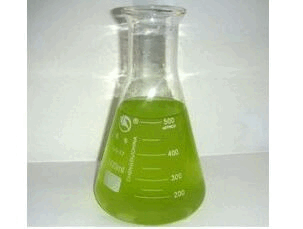IN VITRO ASSESSMENT OF ANTIMICROBIAL AND ANTIOXIDANT ACTIVITIES OF EXTRACTS OF YEMENI FAGONIA SCHWEINFURTHII HADIDI
Keywords:
Antimicrobial, Antioxidant, DPPH, F. schweinfurthiiAbstract
Background: Antioxidant and antimicrobial properties of plant extracts are attributed to bioactive components derived from medicinal plants. This study inspected into the antimicrobial and antioxidant effects of extracts from Fagonia schweinfurthii Hadidi aerial portions.
Method: Several solvents, including n-hexane, ethyl acetate, and methanol, were utilized sequentially to extract secondary metabolites from F. schweinfurthii aerial parts. Antimicrobial activity was evaluated using the well diffusion method and broth serial dilution, whilst antioxidant activity was evaluated using the 2, 2-diphenyl-1-picrylhydrazyl radical scavenging method.
Results: The findings exposed that the studied fungal strains (Candida albicans and Trichophyton rubrum) were resistant to all plant extracts. F. schweinfurthii methanol and ethyl acetate extracts demonstrated inhibitory effects on Gram-positive and Gram-negative tested bacteria with minimum inhibitory concentration between 2.5 and 20 mg/ml. In addition, the most sensitive bacterium was Proteus vulgaris, with an inhibitory concentration (2.5 and 5 mm). While the most resistant bacterium was Staphylococcus epidermidis. Due to the physical and chemical properties of the solvents, different extracts of F. schweinfurthii aerial parts exhibited diverse antioxidant capabilities in the antioxidant activity experiment. Methanol and ethyl acetate extracts exhibited IC50 values of 236 ± 0.2µg/ml and 359.4± 0.6µg/ml, respectively.
Conclusion: According to the findings of this study, the aerial portions of F. schweinfurthii could be considered a possible source of natural antioxidants as well as a valuable source of antibacterial agents against bacteria that cause ear infections.

Peer Review History:
Received: 4 June 2022; Revised: 10 July; Accepted: 20 August; Available online: 15 September 2022
Academic Editor: Dr. DANIYAN Oluwatoyin Michael , Obafemi Awolowo University, ILE-IFE, Nigeria, toyinpharm@gmail.com
, Obafemi Awolowo University, ILE-IFE, Nigeria, toyinpharm@gmail.com
Reviewers:
 Ali Jaber, Laboratory for Research and Development of Medicines and Natural Products, RDMPN, Faculty of Pharmacy, Lebanese University, Beirut, Lebanon.
Ali Jaber, Laboratory for Research and Development of Medicines and Natural Products, RDMPN, Faculty of Pharmacy, Lebanese University, Beirut, Lebanon.
 Dr. Sangeetha Arullappan, Universiti Tunku Abdul Rahman, Malaysia, sangeetha@utar.edu.my
Dr. Sangeetha Arullappan, Universiti Tunku Abdul Rahman, Malaysia, sangeetha@utar.edu.my
Downloads

Published
How to Cite
Issue
Section

This work is licensed under a Creative Commons Attribution-NonCommercial 4.0 International License.









 .
.